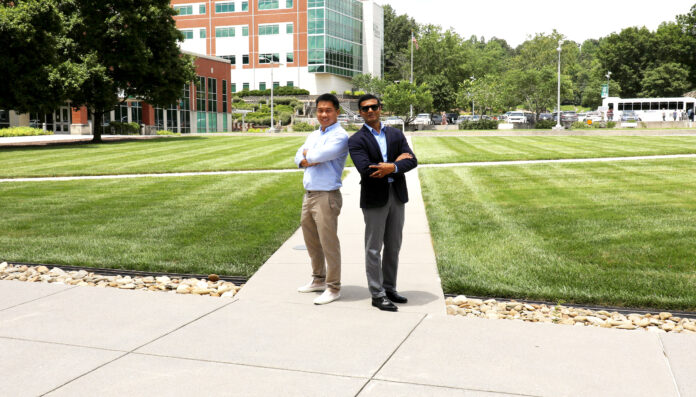When geoinformatics engineering researchers at the Department of Energy’s Oak Ridge National Laboratory wanted to better understand changes in land areas and points of interest around the world, they turned to the locals — their data, at least.
Through an intelligent combination of geotagged social media, global location and natural language data, ORNL’s Junchuan Fan and Gautam Thakur developed MapSpace, a publicly available, scalable land-use modeling framework. By providing data characteristics broader and deeper than satellite imagery alone, MapSpace can generate population analytics invaluable for urban planning and disaster response. The researchers’ findings were published in the International Journal of Digital Earth.
“While the land cover — land, sea, water or desert — doesn’t change, the use of that land changes all the time,” said Thakur, leader of ORNL’s Location Intelligence group. “Understanding how land-use patterns change is essential for development of new services.”
Thakur said challenges with traditional satellite data are twofold. First, processing data accurately is an enormous task because of long download times and requirements of high-resolution imagery. Second, satellite images show only the tops of structures rather than their facades, which are more familiar vantage points. By using points of interest and geosocial data, Thakur and Fan can achieve multiple levels of semantic granularity, a measure of how accurately land use can be characterized.
For example, MapSpace could allow users to see that an area is commercial, zoom down to see it’s used for restaurants, then zoom in further to see the specific type of food served at a restaurant in the area.
The ability to capture land-use characteristics includes not only how buildings and areas are used but also how their function can change over weeks or even throughout a single day.
“Land-use layers are traditionally static, but there are various places in the world where the use of land changes during the day,” such as a town square used as a farmer’s market on weekend mornings, Thakur said. “How to capture these dynamics of spaces and how they change is also one of the things Junchuan has been spearheading.”
By understanding change over time, researchers could suggest new land-use purposes that may not have been possible before. For example, desolate urban areas that once contained thriving shopping malls could potentially be put to better use for developing apartments or industrial centers.
Perhaps almost as impressive as the capabilities they’ve developed is how quickly Thakur and Fan can develop them across a geographic area. Fan was able to develop land-use data for the entire continent of Africa in just two weeks. Before MapSpace, this would have taken months, if not years, he said. The program’s speed further expands its reach into areas such as national and human security. Fan provided examples of emergency support after a hurricane or response to a public health crisis as needs for rapid land-use mapping. MapSpace data could provide insight into safe places to send emergency vehicles or the most accessible locations to set up aid stations.
“For our research to be able to generate global-scale data and map that in real time — or in a very short time span — that can help us better respond to certain time-critical missions,” Fan said. “That’s the unique dimension of work at the lab. Here, it’s critical to both have a scientifically sound method as well as a scalable data product that can be deployed quickly.
Because of its varied resources, ORNL is well-suited to lead a project like MapSpace. Thakur credited the researchers’ success to the interdisciplinary expertise available at the lab and the globally unmatched computing resources that enable rapid, geographically sound land-use data on a global scale. Several of the lab’s experts in data science, geographic information systems and geography have contributed to the project. Thakur also noted the lab’s focus on national security provides a unique perspective for this kind of research and development.
“Combining expertise along these different domains and creating an interdependent research capability is something unique to ORNL that we rarely find in industry or academia,” he said.
Fan continues mapping various continents; his next project is South America. He started with areas outside the United States because they had a scarcity of data and could benefit from a valuable source that can fill in land-use gaps. With the capabilities Fan has developed, Thakur said it’s possible the group could map the entire planet each year, with increasing accuracy and spatial and temporal granularity.
“I don’t know of anywhere in the world where that is achievable at this time … even at a country scale,” Thakur said. “I think the capabilities that we are building here at the lab are not only unique but also first [of their kind] in the world.”
UT-Battelle manages ORNL for the Department of Energy’s Office of Science, the single largest supporter of basic research in the physical sciences in the United States. The Office of Science is working to address some of the most pressing challenges of our time. For more information, please visit https://energy.gov/science.




